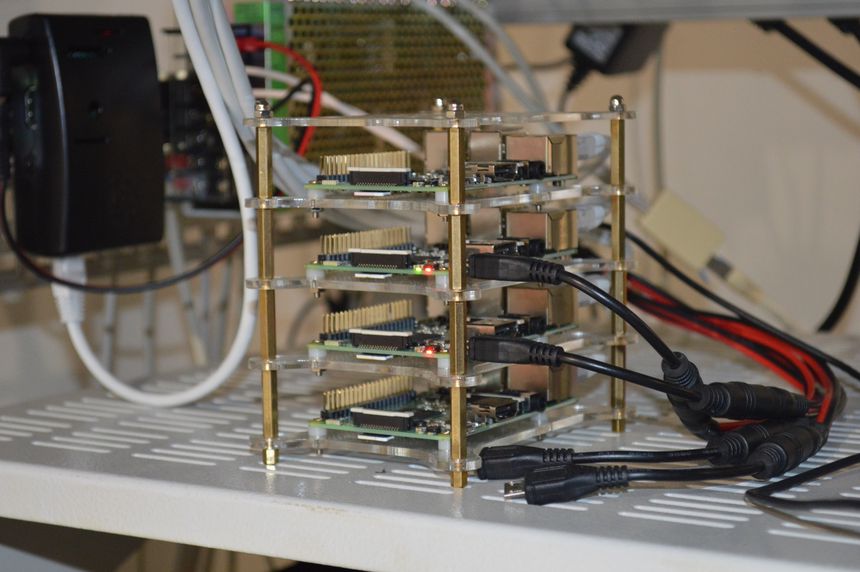I mounted four Raspberry Pi 3’s in an acrylic stack frame, and used a 5V 20A DIN rail mounted power supply to drive them all.
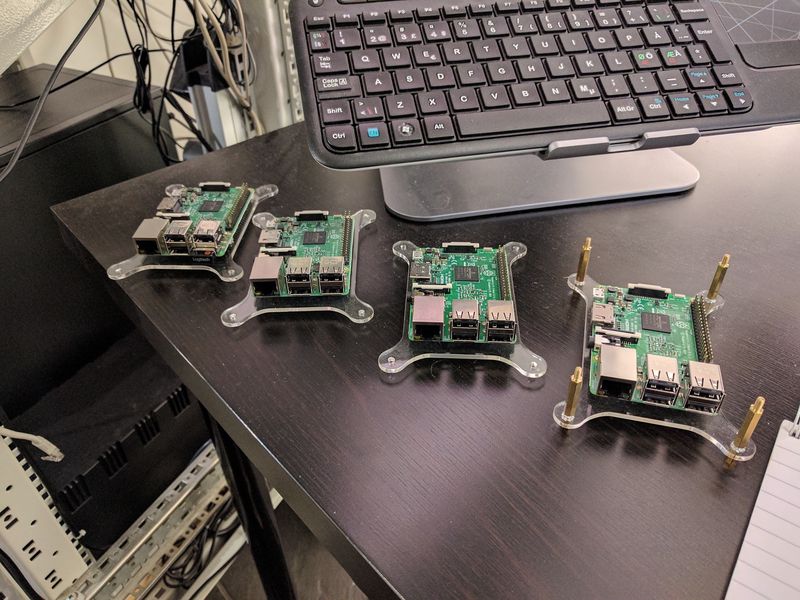
I soldered five power jack pigtails together and wired them to the 5V supply. Then used power jack to USB micro adapters to connect them to the Raspberry Pi boards.
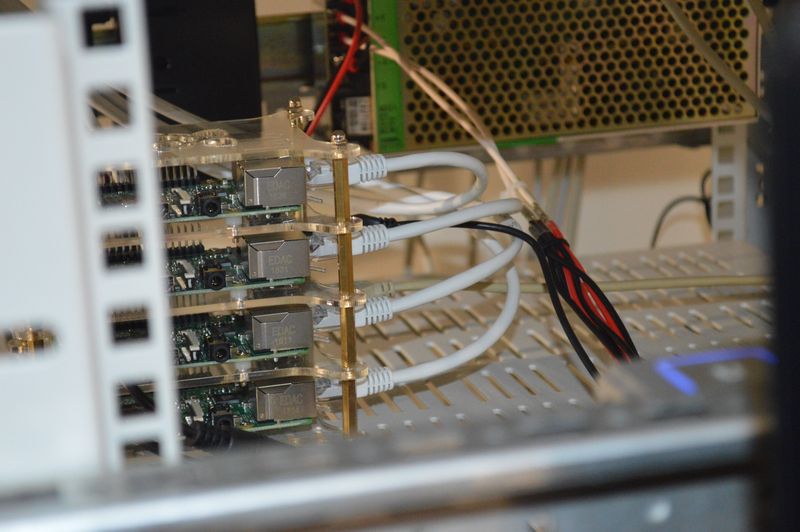
On the DIN rail, I also mounted a Raspberry Pi 1. I used the MC-RP002-BLK enclosure and attached two DIN rail mounting brackets. Here I used an angled power jack to micro USB adapter for the power.
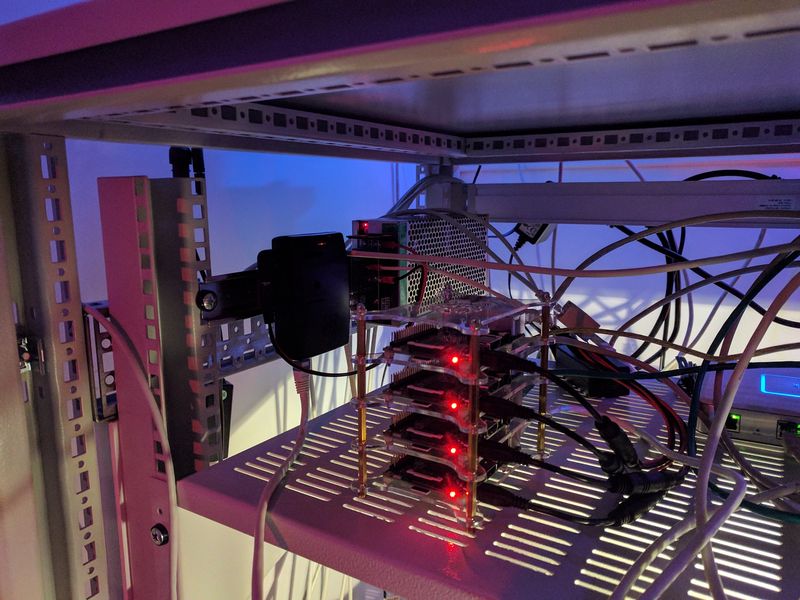
So — five Raspberry Pi boards, connected to a single power supply. As the Raspberry Pis require about 2.5A, the supply would be able to power eight boards.
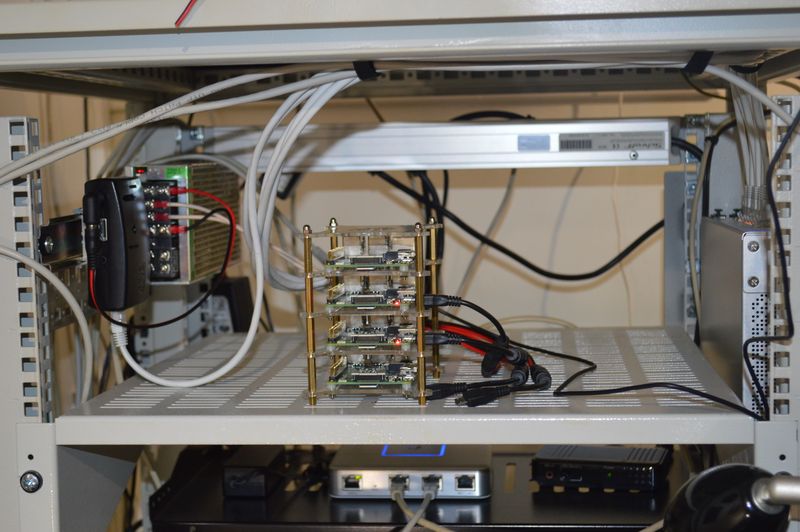
I think a better solution than soldering the power jack pigtails together, would have been to use a DIN rail terminal blocks with a dinkle combiner.
There are all the parts I used:
- 0.5 m DIN-rail, 500x35x7.5 mm
- 2 × microSDHC card, Samsung, 32GB, class 10, 48MB/s
- 1 × microSDHC card, Samsung EVO, 32GB, UHS-1, 100MB/s
- 1 × microSDHC card, Samsung EVO+, 32GB, UHS-1, 80MB/20MBs
- 2 × Mounting bracket, DIN rail, Plastic
- 4 × Power jack adapter, USB micro, 10 cm wire, 2.1mm x 5.5mm
- 1 × Power jack adapter, USB micro, right angle, 2.1mm x 5.5mm
- 5 × Power jack, w/wire, male, 2.1mm x 5.5mm
- 1 × Power supply, 5 V=, 20 A, SMPS
- 1 × Raspberry Pi 1 Model B+, 700MHz ARM CPU, 512MB RAM
- 4 × Raspberry Pi 3 Model B, 1.2GHz Quad 64bit, 1GB RAM, BT, WLAN
- 1 × Raspberry Pi case, Black, MC-RP002-BLK
- 1 × Raspberry Pi stack case, Acrylic, 4 layers
- 16 × Spacer, round unthreaded, 3mm, Ø6mm, Delrin
